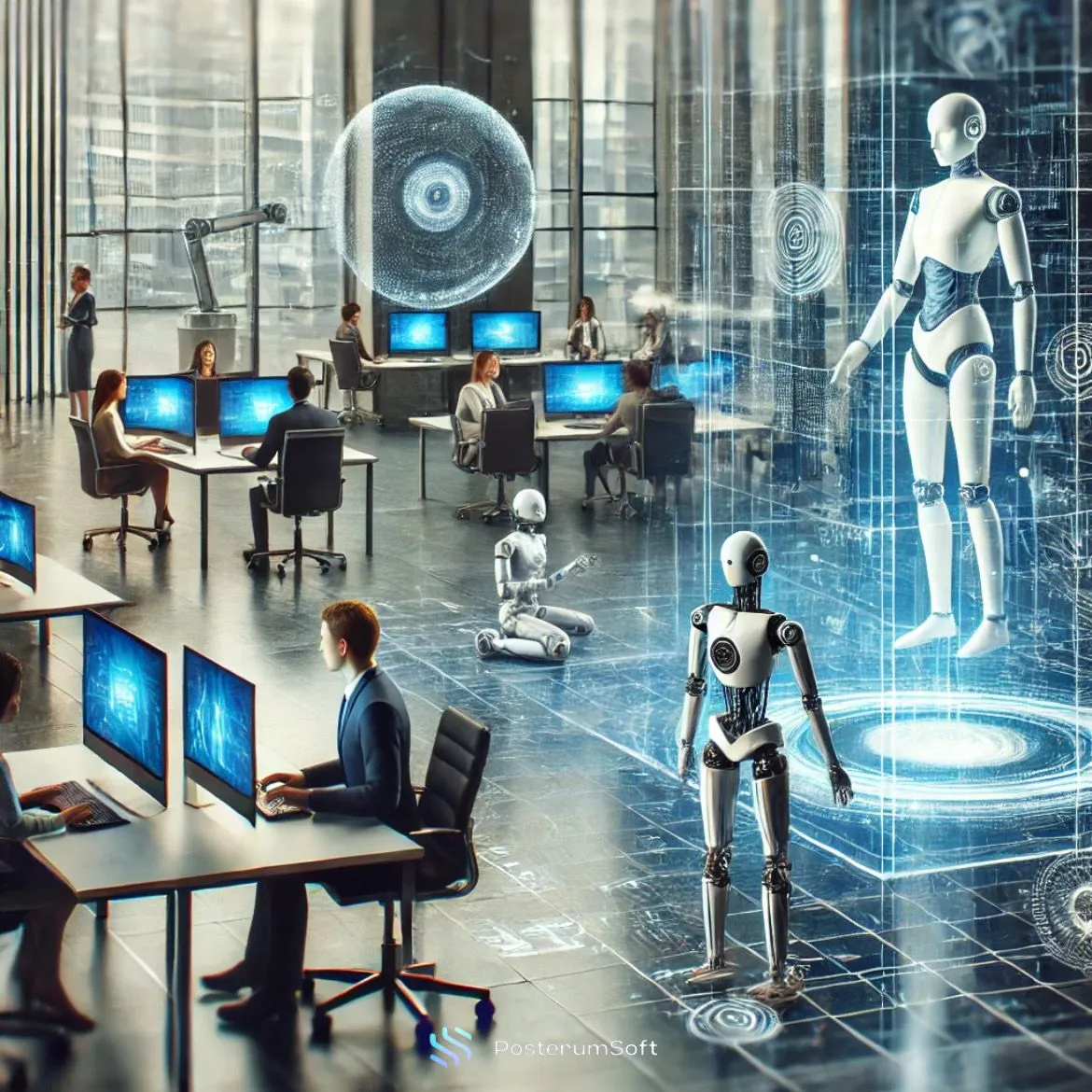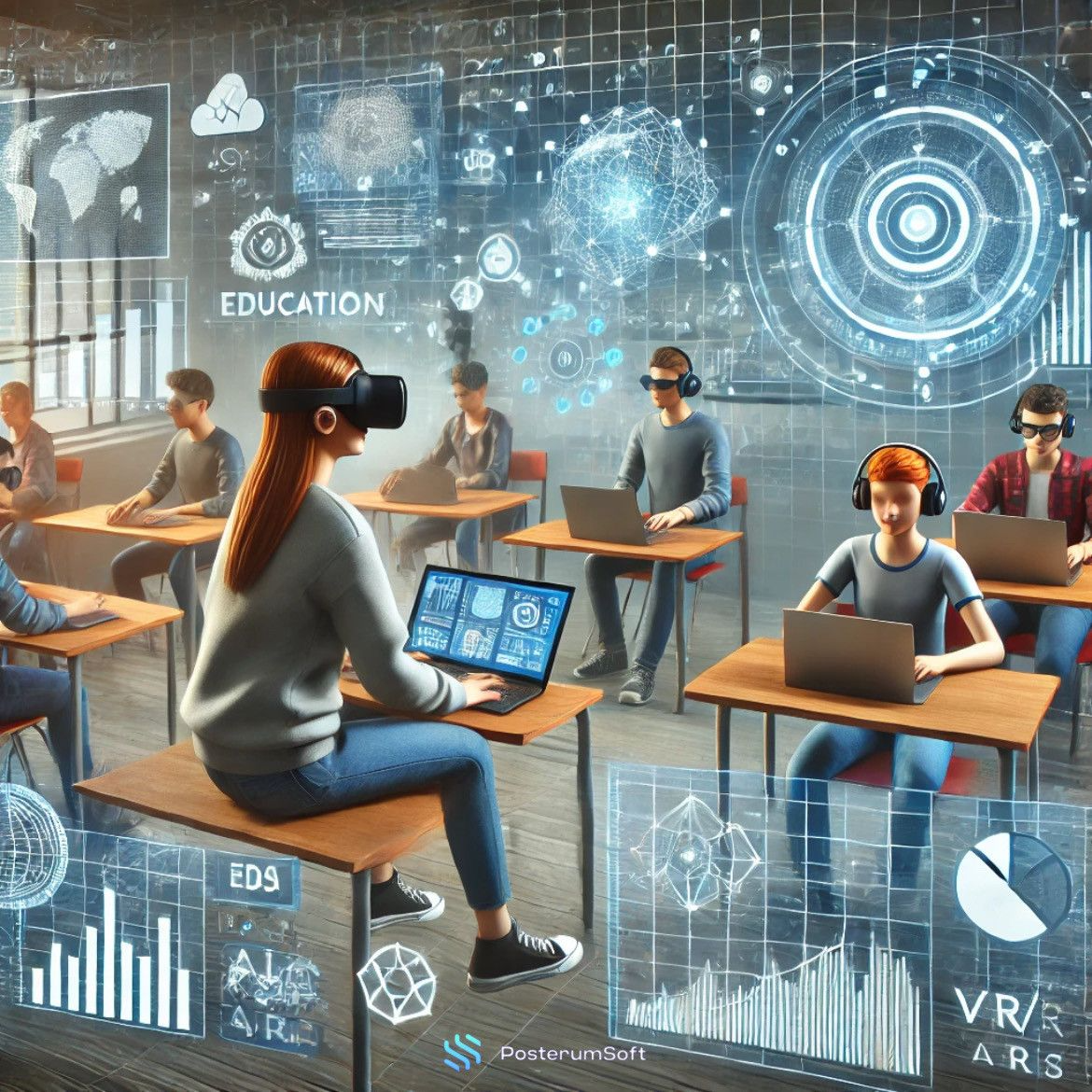
AI/ML Integration in Business: What to Expect in 2025
Explore the trends, challenges, and opportunities of AI/ML integration in business by 2025.
Sep 23, 2024

The modern world demands new education approaches, and online learning continues to lead the digital transformation of educational processes. E-learning platforms have become essential tools for granting students and employees around the globe access to knowledge and learning opportunities. By 2025, significant advancements in these technologies are expected, offering educational institutions and companies even more opportunities to enhance learning processes and education.
In this article, we will take a closer look at the key advantages of using e-learning platforms in 2025 and their impact on educational institutions and companies working in online learning.
E-learning platforms provide the opportunity to learn at any convenient time and place, which is one of the main factors behind their success. Flexibility in learning allows students to combine education with other life responsibilities, such as work or family obligations. By 2025, even more attention is expected to be given to flexible learning, especially considering the growing number of adult learners and professionals seeking to enhance their qualifications.
E-learning technologies can overcome geographical barriers, providing access to quality education regardless of the student’s location. This opens new opportunities for people in remote and underserved regions where traditional educational institutions may be unavailable.
Additionally, e-learning platforms make education accessible for people with disabilities. The platforms adapt to various device types (mobile phones, tablets, computers), ensuring support for those who need special communication tools or inclusive learning methods.
Traditional educational institutions are steadily embracing flexible learning models, offering blended learning opportunities that allow students to integrate online courses with face-to-face classroom sessions. By 2025, many universities and schools will adopt hybrid learning models, where in-person classes are supplemented by online lessons, providing even more opportunities for students.
Example:
Universities can create programs that allow students to choose when and how they will take courses, ensuring access to lectures and assignments at any time. This helps students manage their time more effectively and balance work and study.
One of the key trends in online education is the personalization of the learning process. Every student is unique, and the "one-size-fits-all" approach is gradually fading. E-learning platforms, using data on student behavior and analyzing their performance, can offer personalized learning programs tailored to students' knowledge levels and interests.
By 2025, artificial intelligence (AI) will become an integral part of e-learning platforms. These systems will monitor student progress and automatically adjust the difficulty of assignments, offering additional materials to reinforce complex topics or reducing the time spent on topics where the student demonstrates strong knowledge. Adaptive learning allows students to learn at their own pace, which is especially important in self-study and remote learning formats.
Another important aspect of personalized learning is the ability to receive individual feedback and recommendations. Automated systems will analyze test results, grades, and student activity to provide detailed reports and suggestions for improving performance.
Example:
E-learning platforms can automatically suggest courses based on student's prior experience and interests. For example, if a student shows a strong interest in programming, the system will offer additional materials on more advanced aspects of the subject.
Traditional teaching methods, such as lectures and presentations, are gradually being replaced by more interactive approaches, where students are actively engaged in the learning process. Virtual reality (VR) and augmented reality (AR) will be pivotal in shaping the development of interactive learning in 2025.
VR and AR create immersive learning environments where students can interact with educational objects in three-dimensional space. This is particularly useful in fields such as medicine, engineering, architecture, and design, where the practical application of theoretical knowledge is essential. For example, medical students can practice performing surgeries in a virtual environment, engineers can test prototypes, and architects can develop virtual models of buildings.
Gamification is another important element that makes learning more engaging and motivating. In 2025, using game elements in e-learning platforms will only intensify. Reward systems, achievements, and leaderboards can encourage students to be more actively engaged in learning and increase their overall motivation.
Example:
Virtual labs for engineering students will become standard practice. Educational institutions will offer practical lessons using VR simulations, where students can safely conduct experiments and receive real-time feedback.
Automation is crucial in alleviating the workload for teachers and educational institutions. E-learning platforms in 2025 will use advanced technologies to automate many routine tasks, such as grading homework, creating lesson plans, and analyzing student progress.
AI and machine learning will allow platforms to automatically grade student work, including tests, essays, and other assignments. This not only reduces grading time but also provides more objective and accurate evaluations. For example, platforms can use text recognition systems to assess written work, analyzing structure, argumentation, and grammar.
Automation will also extend to course administration. Platforms can automatically create lesson plans based on previous student performance and progress data. This will simplify the planning process and give educational institutions more time to develop innovative teaching methods.
Example:
Platforms will automatically send students progress reports and offer recommendations for improvement. For instance, a student falling behind in math may receive an automatic suggestion to enroll in an additional course on the subject.
Data analytics in online education plays a vital role in improving the quality of learning. By 2025, e-learning platforms will provide even more detailed reports and analytics, allowing educational institutions and companies to assess the effectiveness of their courses more accurately.
Using data to predict student success will become common practice. Platforms will be able to identify students at risk of dropping out and offer additional resources and support to prevent this. For example, if the system notices that a student is frequently absent or receiving low grades, it can automatically notify a teacher or administrator to assist.
Through analytics, educational institutions can assess which courses and modules are most effective and identify those that require improvement. This helps optimize curricula, making them more effective and tailored to students' needs.
Example:
E-learning companies can use data on student activity to adjust course content, making it more engaging and effective. For instance, if students often get stuck at a particular stage of a course, the company can update the materials by providing clearer explanations or restructuring the lesson.
As globalization increases and the number of international students grows, multilingual support becomes an essential part of e-learning platforms. By 2025, platforms will actively develop capabilities to offer educational materials in various languages, expanding their audience and ensuring access to academic resources for students worldwide.
Many platforms will use machine translation technologies to translate courses automatically into multiple languages. This will enable educational institutions and companies to provide their courses internationally without dedicating substantial resources to manual translation. Additionally, cultural adaptation of educational materials will help make them more relevant to students from different regions.
Example:
Platforms will offer courses in English, Spanish, Chinese, and other languages, ensuring a high level of translation accuracy and adaptation to the cultural nuances of each country.
E-learning platforms continue to play a key role in the digital transformation of education. By 2025, their capabilities will expand significantly, making learning more accessible, personalized, and interactive. Educational institutions and companies working in online learning will receive new tools to improve the quality and efficiency of their programs. The incorporation of technologies like artificial intelligence, VR/AR, and automation will unlock new possibilities for advancing the educational ecosystem.
The future of online education promises to be exciting and diverse, offering new opportunities for students and educators worldwide.
If you enjoyed this article and want to stay updated with the latest trends and developments in online education, connect with us on social media and visit our website!
Follow PosterumSoft on LinkedIn: linkedin.co
Follow PosterumSoft on X: x.com
Follow us on Medium: medium.com
Our Upwork: upwork.com

Explore the trends, challenges, and opportunities of AI/ML integration in business by 2025.

Discover how administrative panels can enhance game development efficiency, improve team collaboration, and reduce costs...